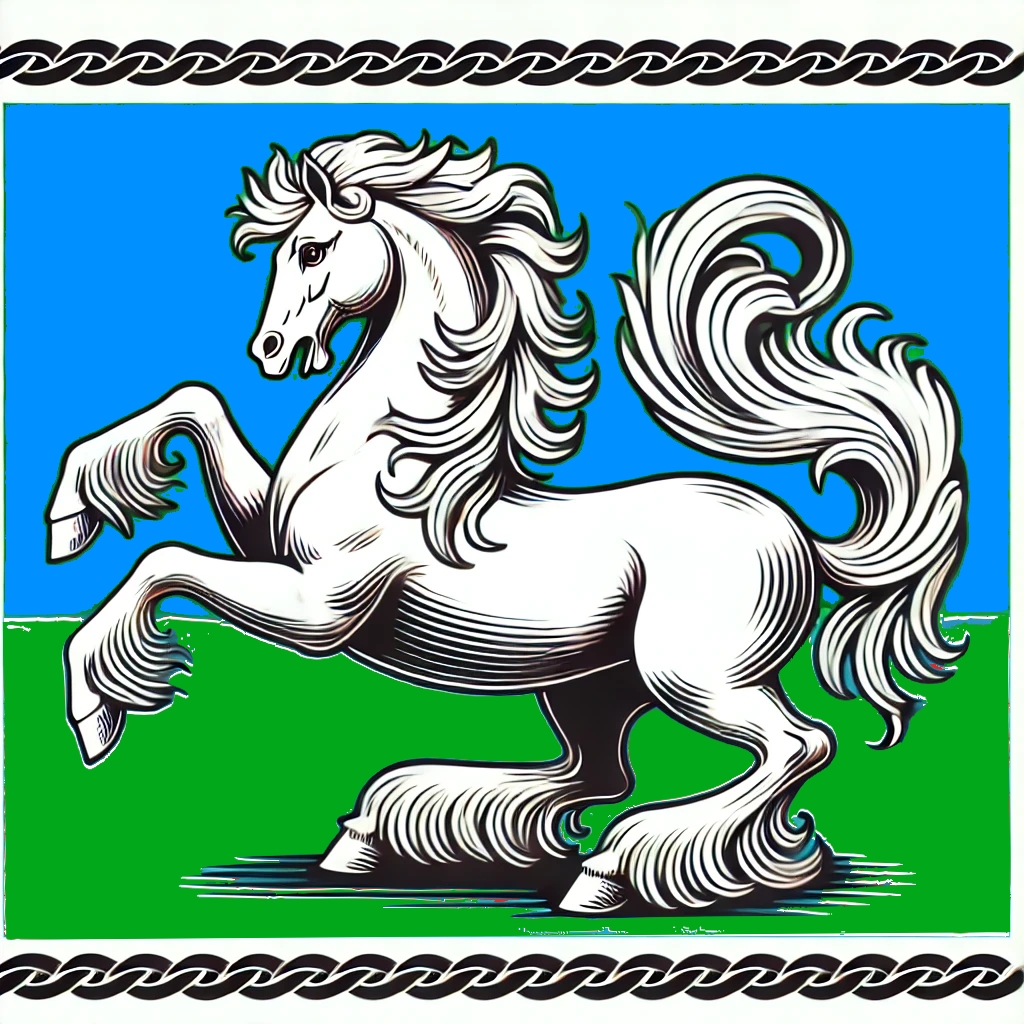RIDDARI, Kingdom - Kvassi Empire
The Kingdom of Riddari
Geography
The Kingdom of Riddari sprawls across vast, fertile grassy plains interspersed with gently rolling hills. Rivers and small streams crisscross the land, feeding into natural springs and shallow ponds, which are vital for both the livestock and the people. The climate is temperate, with warm summers and cool winters, and the plains bloom in vibrant greens and wildflowers during spring.
The eastern region of Riddari borders Southern Riddari, with no natural barrier other than a faint shift in vegetation, making the area perfect for shared trade and diplomacy.
Customs
Riddari values stability, order, and community. Their customs revolve around the cycles of the land and their domesticated animals, particularly horses, which are considered sacred.
- Naming Horses: Every child in Riddari names their first horse during a coming-of-age ceremony, and the bond between rider and steed is considered lifelong.
- Harvest Festival: Celebrated each autumn, the Harvest Festival is a time of feasting, storytelling, and horse races.
- Handfasting Ceremonies: Marriages are sealed with a braided ribbon of horsehair and exchanged vows at sunrise.
The people of Riddari are known for their hospitality, often inviting travelers to share a meal or shelter for the night. They believe that generosity is a sign of strength.
Rulers
Queen Mare Dumur is a wise and measured ruler, known for her dedication to her people’s prosperity. She is seen as a shepherd of her kingdom, ensuring the well-being of all her subjects. Mare consults a council of elders and horsemasters for advice but ultimately makes decisions that reflect her strategic mind.
Her bond with her people is strengthened by her active participation in festivals and ceremonies, where she rides alongside her subjects to honor tradition.
Traditions
- The Oath of the Saddle: Warriors swear this oath when they join the kingdom’s cavalry, vowing loyalty to the queen and their comrades.
- Braiding Rites: During special occasions, intricate braids are woven into both hair and horse manes to symbolize unity and tradition.
- Story Circles: Elders pass down legends and history in nightly gatherings, keeping the oral traditions alive.
Demeanor
The people of Riddari are calm, pragmatic, and disciplined. They are proud of their structured way of life and their connection to the land and animals. While they respect Southern Riddari’s wild spirit, they often see their neighbors as reckless or impulsive. Riddarans are slow to anger but firm in their convictions, valuing loyalty and trust above all.
Food
The fertile plains allow for a mix of agriculture and animal husbandry, resulting in hearty and nourishing meals:
- Barley Stew: Made with tender lamb, root vegetables, and barley.
- Flatbread with Herb Butter: Freshly baked and served with butter infused with wild herbs.
- Honey-Roasted Quail: A delicacy for special occasions.
- Grilled Cheese Skewers: Made with goat cheese and served with fig jam.
- Sweet Cream Dumplings: A dessert filled with spiced cream and served with berry compote.
Pastimes
- Horse Racing: A favored activity, with races held every month.
- Weaving and Embroidery: Riddarans create intricate tapestries and garments, often depicting scenes of nature or mythology.
- Archery Competitions: Held regularly to keep the warriors’ skills sharp.
- Music and Dance: String instruments and drums accompany lively group dances.
- Gathering Circles: Families and friends gather to tell stories or recite poetry.
Clothing
Riddarans favor functional but elegant attire that reflects their connection to the land:
- Everyday Wear: Leather riding pants, tunics made of wool or linen, and sturdy boots.
- Festival Attire: Richly embroidered cloaks and sashes, often in greens, browns, and golds.
- Warrior Garb: Reinforced leather armor adorned with horsehair tassels and decorative metalwork.
Both men and women often wear their hair in long braids, adorned with beads or ribbons for special occasions.
The Kingdom of Riddari is a harmonious blend of tradition and practicality, with a deep reverence for the land, its animals, and its people. This structured and nurturing way of life stands in contrast to the wilder, more untamed culture of their sister kingdom, Southern Riddari.
The flag of the Kingdom of Riddari is a proud and symbolic representation of its values, traditions, and connection to the land and horses. It is designed with the following elements:
- Shape and Background:
The flag is a long rectangular banner with a horizontal orientation. The background is split horizontally in the middle, deep green at the bottom, symbolizing the fertile plains and vivid blue on top, symbolizing the vast skies and limitless freedom. - Central Emblem:
At the center of the flag is a rearing horse in white, its mane flowing wildly. The horse represents freedom, loyalty, and the kingdom's sacred bond with these animals. - Border:
A thin braided design in silver and black frames the flag, reminiscent of the intricate braiding traditions of Riddari.
The flag is often flown during festivals, battles, and ceremonies, and smaller versions are woven into horse saddles and warrior cloaks to signify loyalty to Riddari.




Comments